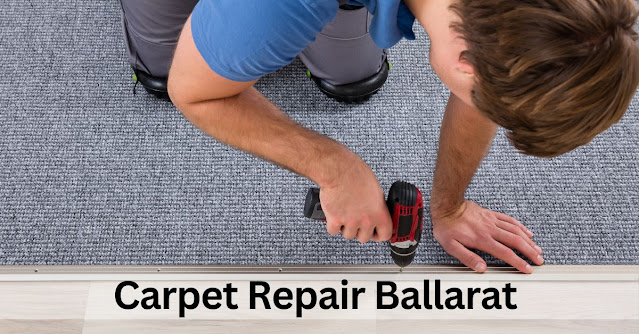Carpet Repair Brisbane: Is It Possible to Patch Your Carpet Yourself?
- Get link
- X
- Other Apps
Are you tired of staring at that unsightly carpet stain or tear every time you walk into your living room? Do you dread the thought of hiring a professional carpet repair Brisbane to fix it because of the high cost? Well, fear not my frugal friends! Today we're going to explore whether DIY carpet repair is a viable option for those who want to save some money and take matters into their own hands. So grab your tools and let's get patching!

What is Carpet Patching?
Carpet patching is a common DIY repair that can be done by homeowners. Carpet patching is typically done when there is a hole or tear in the carpet. The most common type of hole is a small one that does not affect the way the carpet looks or functions. A large hole, however, may cause the underlying floorboards to show through and would need to be fixed with a professional carpet repair Brisbane.
To patch a carpet, first measure the size of the hole. Then, select the correct carpet supplies - padding, adhesive, and carpet tape - based on this information. Next, place padding around the perimeter of the hole. Cut adhesive strip into appropriate lengths and place it over top of padding. Finally, cover entire area with carpet tape in a continuous pattern.
How to Patch Carpet Yourself
Carpet is a popular choice for flooring in homes, and as such can be subject to wear and tear. In some cases, this may lead to areas of the carpet becoming torn or worn out. If this is the case for your carpet, there are a few methods you can use to repair it yourself.
One option is to try using a commercial product called Carpet Gard. This product is designed to seal and protect areas of carpet that have been damaged by wear and tear. After applying Carpet Gard to the affected area, you should wait until it has dried before attempting any repairs.
If you don't want to use a commercial product, you can also try patching your carpet yourself using an adhesive. There are several different types of adhesives available on the market, so it's important to find one that will work well with the type of carpet you're trying to repair. After selecting an adhesive, apply it liberally to the area that needs fixing and allow it to dry.
Pros and Cons of Carpet Patching
Carpet patching can be a great DIY project if you have the right tools and know how to do it correctly. Here are some pros and cons to consider before deciding if carpet patching is right for you:
Pros of Carpet Patching:
- It's an easy project that can be done on your own.
- Patching can save you money on repair bills.
- It's a low-impact way to improve your carpet's appearance.
Cons of Carpet Patching:
- Patching may not be a permanent solution, and could eventually need replacement.
- Patching may not be effective in all cases.
- Patching can cause damage to the underlying floor or rug fibers.
Final Thoughts
carpet repair can be a daunting task, but with a little bit of research and know-how, it's definitely possible to patch your own carpet. Here are six tips for DIY carpet restretching Brisbane:
1. Start by taking stock of the damage. Carpet repair is not as straightforward as it may seem – if you don’t have an accurate idea of what’s wrong, you won’t be able to fix it correctly. Make sure to take pictures or sketch out a detailed diagram of the issue before starting any repairs.
2. Check for moisture levels. If there’s water present in the area where the damage occurred, it will be difficult to remove the stain without damaging the surrounding carpet fibers. Remove any excess water with a dry towel before starting your repairs.
3. Use heat and steam if necessary. If deep stains or severe dirt build-up is present, heat and steam may be necessary to break up the material and clear away the debris. Be aware that these treatments can be very dangerous if not done properly, so use caution and consult with an expert if needed.
4. Apply adhesive and sealant carefully. Once all debris has been removed, apply an adhesive sealant to affected areas and position patches over the sealant using a heat gun or hair dryer set on low heat (if using fabric patches). Allow sealed patches to cool completely before moving onto Step 5 below.
5. Patch as needed. If your adhesive sealant begins to peel or come loose, simply apply a new layer of sealant and patch as necessary. Be sure to wait 24 hours after applying the adhesive before moving onto Step 6 below.
6. Re-seal and finish. Once all patches have been applied and sealed, use a hair dryer set on low heat to re-seal the area. Finish by spraying a coat of sealant over the entire patch area to ensure long-term protection.
- Get link
- X
- Other Apps

.jpg)
Comments
Post a Comment